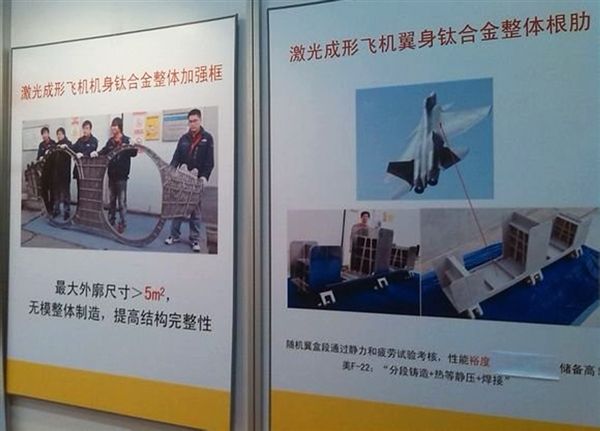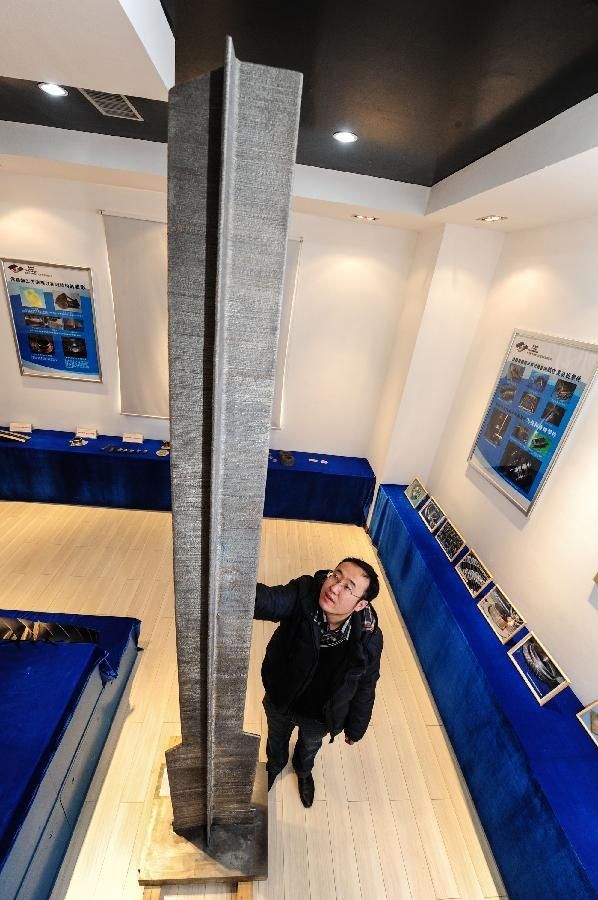Why China's Air Force Needs Russia's SU-35文章出處
The PLAAF has a growing fighter fleet, but it needs help on one critical component.
Last April, Chinese airplane manufacturer Shenyang Aircraft Corporation surprised military observers by test flying its new J-11D fighter jet, an upgraded version of the J-11, China's indigenous copy of the Russian Su-27. The D-model J-11 is believed to include such advanced features as an active electronically scanned array (AESA) radar, a relocated infrared search and track (IRST) system, and the expanded use of composite materials to reduce the plane's weight and radar signature. This first flight indicates that the J-11D is further along in its development cycle than many experts predicted and is poised to provide a new and deadly addition to the growing fighter fleet of the People's Liberation Army Air Force (PLAAF).
Despite the evident maturity of the J-11D program, the Chinese military nevertheless appears to also be going ahead with plans to purchase Russian Su-35 Flankers. The Su-35 is far more maneuverable than the J-11 – which gives the Russian jet an advantage in short-range dogfights – can fly longer distances, and can take off and land with a larger payload. It is also equipped with new avionics and new cockpit displays. However, its radar is a less advanced passive electronically scanned array (PESA) than the AESA system on the J-11D. Moreover, the aircraft and its systems will be manufactured abroad. The Chinese government views its indigenous defense industry as a strategic asset; purchasing more planes from Russia will not help advance Beijing's goal of developing a mature, self-reliant aerospace industry. Given the apparent redundancy of moving forward with two very similar aircraft programs, some analysts speculate that the PLAAF's primary motivation for buying the Su-35 may not be for its value as a weapons system but rather because it is equipped with advanced AL-117S turbofans.
Engines are a critically important component of any fighter aircraft, and they present Chinese airplane manufacturers with a dilemma. Their new fifth-generation fighter prototypes, the Chengdu J-20 and Shenyang J-31, sport sophisticated airframes and avionics that are clearly intended to make them a match for the United States' most advanced aircraft. However, China's ability to manufacture jet engines has not kept pace with other sectors of its aerospace industry. Regardless of how capable other Chinese aircraft systems may be, without a reliable, high-performance turbofan engine to power them, both the J-20 and the J-31 will be crippled.
History is replete with examples of otherwise excellent jets that struggled because they were underpowered. Although the iconic P-51 Mustang is now best remembered for its sterling service escorting strategic bombers on missions over Germany, it was only after engineers replaced its original Allison engine with the much more powerful British Merlin that it could fly and fight at the altitudes necessary to keep station with the bombers it was protecting. Early models of the now-legendary F-14 Tomcat were equipped with turbofans so weak that Secretary of the Navy John Lehman blamed them for nearly 30 percent of all Tomcat crashes and described them as being “just…terrible.” The F-15 Eagle and F-22 Raptor both struggled through long, painful development programs before their massive engines finally matured and turned them into the highly maneuverable dog fighters that they are today.
The Chinese military has traditionally relied on Russian engines to power its jets. Unfortunately for the PLAAF, the foreign models it is currently using are no longer cutting edge. The designs of these fighter engines date back more than 30 years and they were intended to be used in aircraft that are much lighter than the new models being tested today. For the time being, prototypes of both the J-20 and the J-31 are flying with older Russian turbofans – the J-20 with the Saturn AL-31 and the J-31 with the Klimov RD-93 . Analysts have speculated that both of these aircraft are facing performance limitations imposed by their vintage power plants. For example, the J-20's current reliance on AL-31s may be preventing the aircraft from achieving supercruise, one of the key performance characteristics that makes the US F-22 such a capable fighter.
China's airplane manufacturers have two options for acquiring more advanced engines: Buy them from the Russians or build them at home. Beijing's clear preference is for the latter; engines have become a focal point of the PRC's aerospace industry. One Russian commentator described domestic engine development as being as strategically important for the Chinese as the Apollo space program was for the United States during the 1960s. However, jet engines are notoriously difficult to develop, and pose unique design challenges due to the extreme forces they encounter during flight and the exotic materials and techniques used in their construction. In 2012, Andrew Erickson and Gabe Collins argued that engine manufacturing remained a “persistent Achilles heel” of the Chinese aircraft industry and one that lagged behind rapid progress in other aerospace sectors, such as airframe design and sensors.
Today, the most advanced Chinese-made military turbofan in operational use is the Aviation Industry Corporation of China (Avic) WS-10. The WS-10 provides power for many Chinese aircraft, including some of the PLAAF's J-11 fleet and the new J-16 multirole fighter. Reports on its capabilities are mixed at best. Although many of the engine's initial teething problems have apparently been overcome, Jane’s reported last September that the WS-10 still suffers from so many faults that the “number [of engines] sent back to the…plant exceeds the amount of new production units.” Some Chinese commentators have also speculated that the WS-10 lacks sufficient power for the J-16, which is heavier than other Chinese Su-27 variants, and will need to be upgraded to allow the new plane to meet its design potential.
Another clue pointing to potential problems with the WS-10 is the decision by the PLAAF to use the AL-31 to power the newest variant of the J-10 attack fighter, the J-10B. Although a prototype J-10B equipped with a WS-10 was seen flying as far back as 2011, the PLAAF has nevertheless decided to go forward with the AL-31 for the production version instead. This decision may indicate that the Chinese military is concerned about the WS-10's capabilities and is opting for a tried-and-true Russian alternative.
Regardless of the WS-10's current capabilities, the fifth generation J-20 and J-31 will need much more powerful and reliable engines if they are to maximize their performance. An upgraded WS-10 is one option for the J-20, but it would almost certainly still leave the aircraft underpowered for its size and weight. Two entirely new Chinese engines are currently in development: the Xian WS-15 for the J-20 and the Avic WS-13 for the J-31. The progress of the WS-15 is unknown and it is not being flown on J-20 prototypes, although one Chinese blogger recently suggested that positive test results may indicate an unexpected leap in progress for the engine. The WS-13 was displayed at the Zhuhai air show last November along with another afterburning turbofan, but according to Bill Sweetman “the identical engines were on show two years ago,” and the “the [WS-13's] development pace so far contrasts sharply with the rate at which new missiles and radar systems are being produced.”
The questionable progress of both the WS-13 and WS-15 programs may help to explain China's interest in the Su-35, the latest and most advanced variant of Russia's venerable Flanker aircraft family. The Su-35 is powered by the AL-117S, a significantly improved version of the AL-31 also sometimes designated the AL-41.
With its domestic programs seemingly in limbo, some analysts have argued that an AL-117S purchase would be the fastest way for the Chinese to get their hands on a suitable turbofan for the J-20. Since Russia is reportedly unwilling to sell the new engine as a standalone product, the PLAAF will have to buy the Su-35 and acquire the AL-117S as a part of a complete weapons system. After a series of false starts, it seems that a deal for 24 Su-35s is now in its final stages and Chinese pilots have already begun training on the new aircraft in anticipation of the first delivery in 2016.
In the long-run, it would be foolish to bet against the Chinese aerospace industry ultimately achieving the capacity to develop competitive high-performance jet engines. In the near term, however, the AL-117S remains China's best option for powering the J-20. Although resorting to Russian technology may not be the ideal solution from an indigenous manufacturing standpoint, lessons learned from the AL-117S will undoubtedly be incorporated into the WS-13 and WS-15. That may benefit the J-31, which will be stuck with older WS-10s or RD-93s until the WS-13 comes on line.
For the PLAAF, purchasing the Su-35 is a win-win. They will not only get a highly capable new aircraft, they will also acquire get an engine that has the power to make their sophisticated new J-20 a world-class fighter.
Jesse Sloman is a research associate in defense policy at the Council on Foreign Relations and a member of the Truman National Security Project. Lauren Dickey is a research associate in US foreign policy at the Council on Foreign Relations.
作者的看法
J-11D的AESA.IRST跟複合材料運用都已經比俄羅斯的SU-35要好
但是很可惜的
中方在發動機的發展上已經遇上了瓶頸而無法突破
不管是J-20的AL-31還是J-31的RD-93,都已經是太古老而發展空間有限的古董了
甚至直接影響這兩種新機在飛行性能上的表現(譬如不開後燃器超音速巡航)
而WS-10顯然還有非常多的問題
如果要能用最快的速度讓中國戰機能獲得足以匹配戰機性能的發動機
購買SU-35來獲得AL-117S是最快速的方式
也就是說,因俄羅斯不願單獨出售AL-117S,使得中國只好購買除了發動機外,並沒有比中製戰機先進,甚至可能有點落伍的SU-35
而中國也希望藉由AL-117S的引進,來突破發動機的發展瓶頸
希望在WS-13/WS-15獲得突破(也就是說WS-10就這樣了.......不要在這上面想太多)
作者
Jesse Sloman是美國外交關係委員會副研究員和杜魯門國家安全項目的國防委員會成員
Lauren Dickey則是英國的中國國防與外交政策的研究員
Su-35的AL-117S也不怎麼樣,跟西方比起來普通而已。 Su-35真正的強點是拳頭大,手臂長,眼睛看的非長遠,又會上下左右轉動擴大視野角度,接戰警戒距離遠,就是暱蹤機也要忌憚他三分。要說Su-35哪個單元很先進科技,老實說沒有。 它是完全體現毛子民族個性的產物。粗曠,兇蠻,鬼智下的極致發揮。腦子不夠大就加大,處理能力不夠就加多DSP,眼睛看不遠就加長偵測距離,打得不夠遠就加長導彈射程,加大暱蹤戰機的發現距離,抵銷暱蹤戰機暱蹤優勢。 買不多也是因為日韓暱蹤戰機也不多,說實話這筆買賣是買對了。有些五毛檔跟義和團噴子說這是賣國,喪權辱國,其實說穿了就是自己的J-20不爭氣下的結果,怨不得別人。
Sam Tsou wrote:
Su-35的F-117也不怎麼樣,跟西方比起來普通而已
F-117????
你是說AL-117S吧
相對老共手上現有的
算比較好的
Sam Tsou wrote:
Su-35真正的強點是拳頭大,手臂長,眼睛看的非長遠,又會上下左右轉動擴大視野角度,接戰警戒距離遠,就是暱蹤機也要忌憚他三分
西方的專家認為SU-35的雷達跟目標追蹤系統.機身結構都不如中製的J-11D勒
Sam Tsou wrote:
自己的J-20不爭氣下的結果,怨不得別人
看起來老共應該是會用AL-117S來提升J-11D
然後在COPY AL-117S過程中獲得的技術來改進自己的WS-13/WS-15
最後應該還是用在J-20/J-31上
PC故障中 wrote:
F-117????...(恕刪)
是追蹤目標數(美機也要開到最大功率),不是雷達不好看不遠。 不管是黑貓白貓,只要能抓到耗子的就是好貓,老實說現有戰機有哪個看的比它遠,比它寬?
機身結構是Su系列原先的設計,機身結構比不上J-11D? 這個就不好說了,目前上艦機繳的學費還沒繳完吧!
AL-117,老是跟大流氓的F搞混。
Sam Tsou wrote:
機身結構是Su系列原先的設計,機身結構比不上J-11D? 這個就不好說了,目前上艦機繳的學費還沒繳完吧!
老共在J-11B開始搞上複合材料減重(自製的發動機不行,所以搞減重)
在J-11BS居然搞上了Fly-By-Wire(世界第一架Fly-By-Wire是F-8C Crusader於1972年由NASA改裝)
最早進行滑跳起飛測試的也不是J-15而是J-11B(2010年)
而J-15也是拿J-11的Fly-By-Wire來做操縱系統,而非1985年版的SU-33的液壓控制系統
The Su-33 sports canards that shorten the take-off distance and improve manoeuvrability, but have required reshaping of the leading edge root extensions (LERX). The rear radome is shortened and reshaped to prevent its striking the deck during high-Alpha ( angle of attack ) landings.
就顯得多此一舉了
那最近共方媒體中,不明型號的J-11也由遼寧號滑跳起飛測試
就有可能是由J-11衍生艦載型,與J-15搭配
PC故障中 wrote:
老共在J-11B開...(恕刪)
謝謝說明,老實說這些結構設計改進早應該在設計階段就要進行應力,剛性,壽命,溫度變化,蠕變,振動等等模擬檢驗。完成後還要跟環測工程研討如何建立實體樣本去做環測,預先找出個結構環節的應力缺陷,壽命推測,潛在風險,材料補強等等一大系列的問題預先改進,而不是為求快就急就章似的去給飛飛做實機測試。老實說飛機毀了可以再建,而一個飛飛可是比飛機還值錢的,他需要非常長長時間的培養才能千中選一培訓出來。
現在的問題就是出在這裡,俄毛跟國企許多單位都不注重這一塊。這已經不是錢多的問,而是一個制度下的觀念問題,我看短時間可能還要走一大段路才是。
Su-35雖然是PESA,可是這PESA看得更遠,這才是對付暱蹤戰機關鍵中的關鍵。
john1220 wrote:
老共錢是多到受不了...(恕刪)
SU-33早年的編號是SU-27K
就算現在改編號為SU-33北約代號也不過就是繼續沿用SU-27的Flanker加"-D"
SU-33本來就是SU-27的艦載機型呀
算不上搞一架新飛機
而當初SU-33搞前翼的原因
PC故障中 wrote:
The Su-33 sports canards that shorten the take-off distance and improve manoeuvrability, but have required reshaping of the leading edge root extensions (LERX). The rear radome is shortened and reshaped to prevent its striking the deck during high-Alpha ( angle of attack ) landings.
J-11經過減重工程跟改用Fly-By-Wire
還需要sports canards嗎?
比較合理推論,老共會用J-11D擔任艦隊防空,J-15擔任攻擊機的角色
Sam Tsou wrote:
謝謝說明,老實說這些...(恕刪)
搞複合材料跟線傳飛控
就合理性來說,去改一架真的不如重新設計
不過看殲八一搞10幾年才服役的爛尾案
可能老共覺得不要想再花時間重跑空氣動力學了吧
內文搜尋
X

































































































